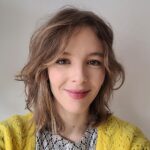Link to Pubmed [PMID] – 23179013
Eur Phys J E Soft Matter 2012 Nov;35(11):123
In paper I, we addressed the impact of the spatio-temporal program on the DNA composition evolution in the case of time homogeneous and neighbor-independent substitution rates. But substitution rates do depend on the flanking nucleotides as exemplified in vertebrates where CpG sites are hypermutable so that the substitution rate C –> T depends dramatically (ten fold) on whether the cytosine belongs to a CG dinucleotide or not. With the specific goal to account for neighbor-dependence, we revisit our minimal modeling of neutral substitution rates in the human genome. When assuming that r = CpG –> TpG and its reverse complement r(c) = CpG –> CpA are (by far) the main neighbor-dependent substitution rates, we demonstrate, using perturbative analysis, that neighbor-dependence does not affect the decomposition of the compositional asymmetry into a transcription- and a replication-associated components, the former increases in magnitude with transcription rate and changes sign with gene orientation, whereas the latter is proportional to the replication fork polarity. Indeed the neighbor dependence case differs from the neighbor-independent model by an additional source term related to the CG dinucleotide content in both the transcription and replication-associated components. We finally discuss the case of time-dependent substitution rates confirming as a very general result the fact that the skew can still be decomposed into a transcription- and a replication-associated components.

